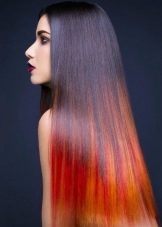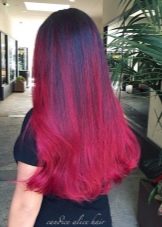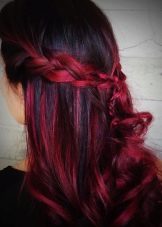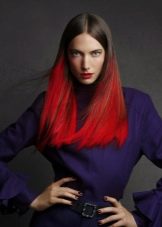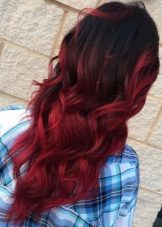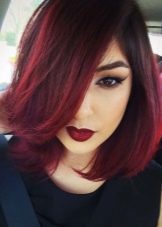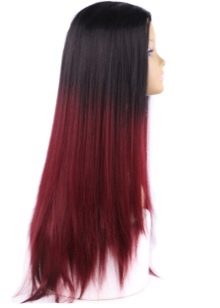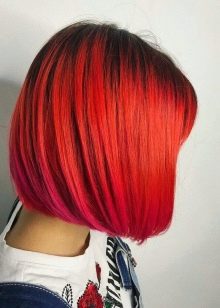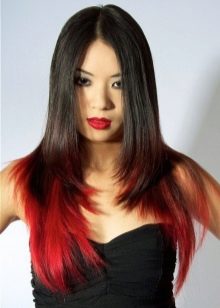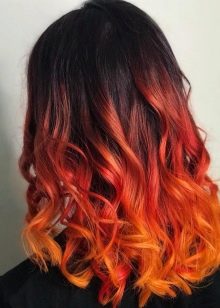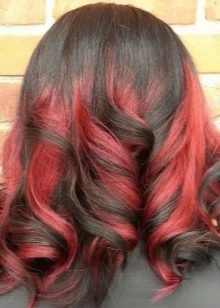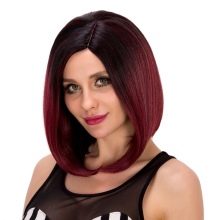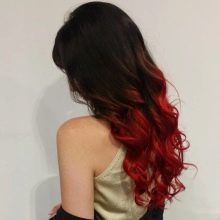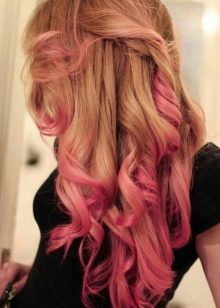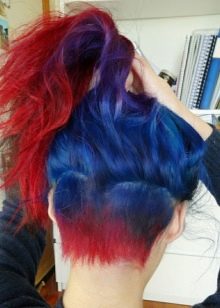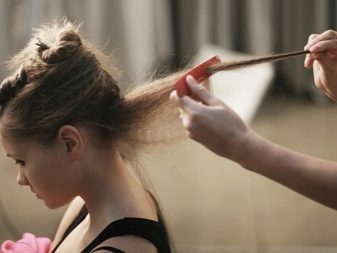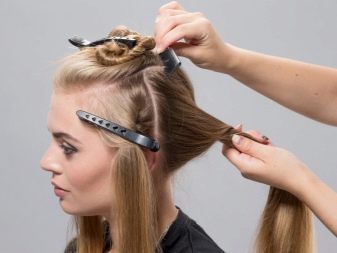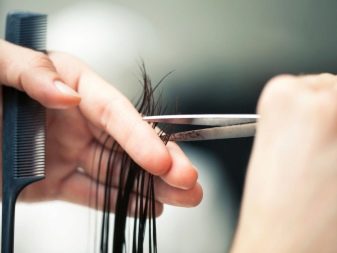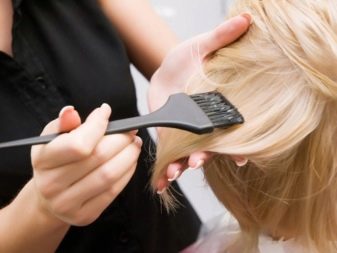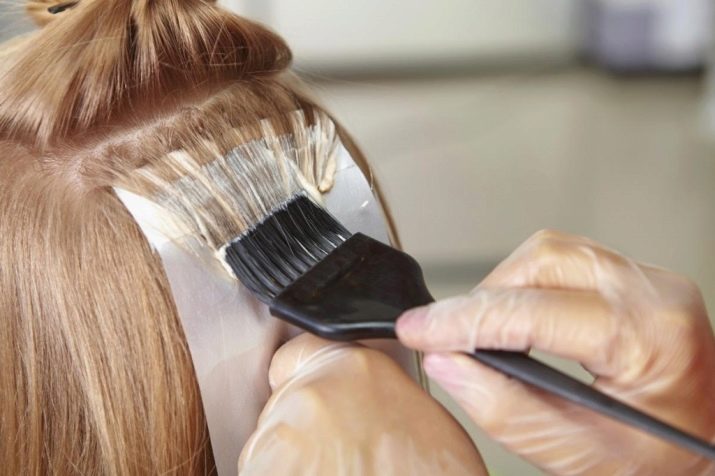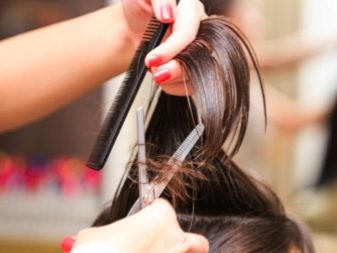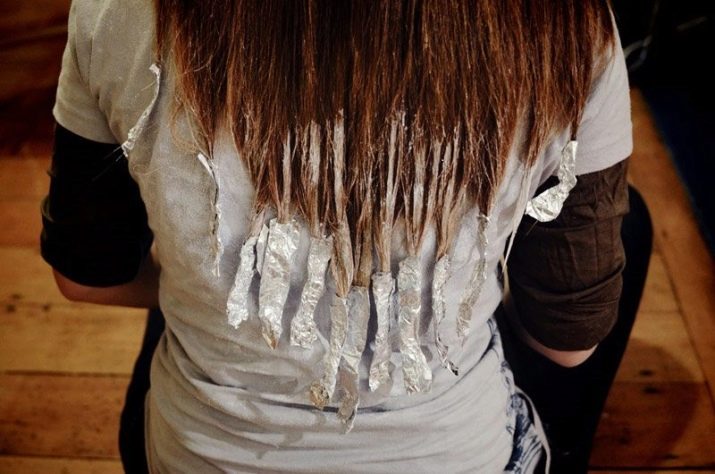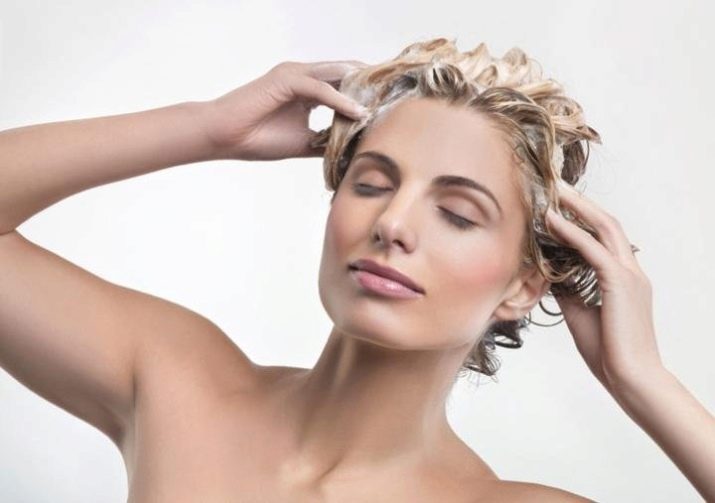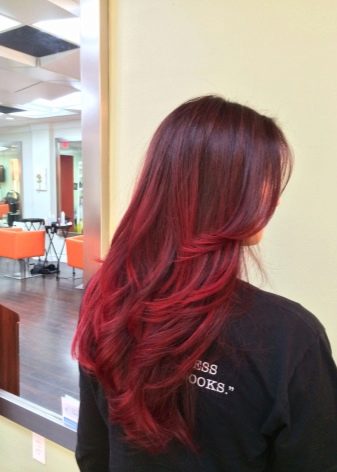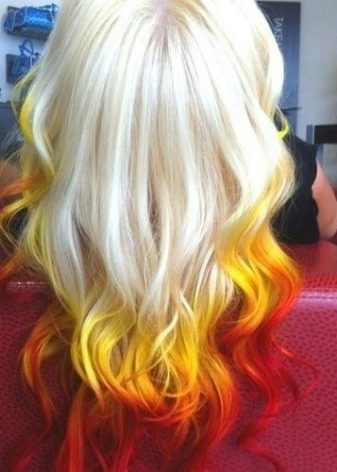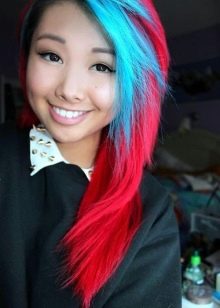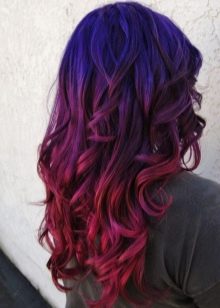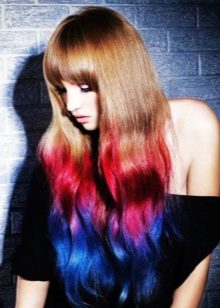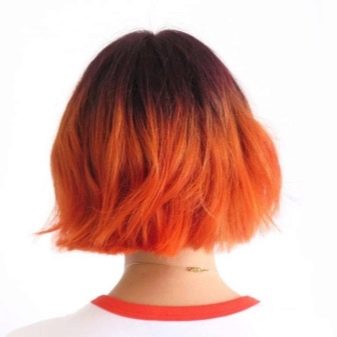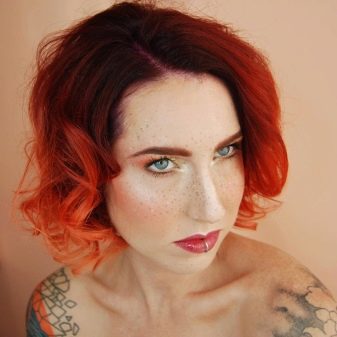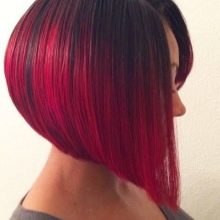Ombre for many years included in the number of popular hair dyes. And among all its many species, one of the leading positions deservedly holds the red ombre. Light or dark curls with red tips always look advantageous.
Features
The popularity of ombra is due to the fact that such coloring itself looks very interesting on any hairstyle. And the red color is always associated with something challenging, out of the general mass, memorable and audacious. An extensive variety of shades of this color will allow you to choose the right one for almost any requirements.
Ombre is an ideal option for those who want to change their image, without applying very radical measures. This coloring is considered to be more benign than the classic one tone, as the hair is not painted entirely. Red ombra, despite the characteristics of the color and the need to often pre-lighten the hair, also has this important feature. Another feature of this coloring is the lack of the need to update the color monthly - most often the hair roots with red ombra remain intact.
The advantages can be attributed to the fact that Ombre is inherent in the property to adjust the shape of the face with the help of colored tips of the strands. For example, a properly chosen haircut and red ombre can visually make the face more elongated.
As well as curls, painted with such technique, always look more voluminous than monophonic.
Ombre although it is a type of complex staining, but it can be done at home. This only adds to his popularity among young people. And red ombre is a huge field for experiments with shades and their combinations. The colored tips of the strands look bright anyway.
The classical ombre technique assumes a free choice of such details as smoothness or sharpness of transitions between shades, height of coloring of strands from their tips, evenness or randomness of transitions and others. This allows you to create a unique final result.
However, in addition to the advantages, the red ombre has weaknesses that should be considered before making a decision about hair dyeing in this technique.
There is a risk to get a final image of the unfinished and seemingly sloppy. This can happen if the shade for coloring will be chosen incorrectly and will create a strong disharmony with the natural hair color. This technique is sometimes used to shock, but there is too thin a line between the stylish and startling and grotesque.
Owners of tight curls need to be careful when performing a red ombre. Very tight curls can interfere with a beautiful result. For such hair, it is better to choose the softest transition between natural color and red ends.
Attempts to independently perform an ombre at home (especially if it happens without the help of an extra pair of hands) may fail. Instead of beautiful and smooth fiery tongues at the ends of the strands, you can get a chaotic spotty coloring.
Who is going to?
Most often, red ombre is done on natural hair. With this staining, you can significantly change the image without changing the completely natural color of the curls. Red ombre allows you to make a bright accent that will not go unnoticed.However, other options are possible when the upper part of the strands and their ends are individually colored - each in its own color. Thus, you can create very very unusual combinations and thus even more draw attention to yourself.
Best of all red ombre looks on dark hair. It always looks harmonious, although red and contrasts with dark shades rather strongly. So, red ombre will be an excellent choice for owners of dark blond curls, chestnut, black and other similar ones.
Holders of blond hair, too, can afford such staining and look quite organic. The only question is to choose a perfectly matching shade. It should look quite harmoniously together with the natural hair color or the color that will be used as the base.
In the case of blondes, it will be very gentle to look at the ombre with pink tips. It can be both pastel colors and brighter shades. Bright red ends also look great on bright strands.
Light brown hair goes well with unsaturated red hues. Crimson, burgundy, pearl pink colors can look great on such strands too.
Another variant of red ombre looks bolder than in combination with natural shades, but no less beautiful. This option - red ends with blue roots.
Yes, such staining requires more frequent updates, as well as more reverent care, but it looks very impressive. This option is chosen by those who want to stand out and declare themselves loudly.
Subtlety staining depending on the length
Red ombre - coloring is universal and will look good on curls of any length. However, there are some small features.
- If the hair is very short, the strands are combed and then dyed. Dark hair as a general rule must first be lightened. The use of foil when bleaching will help to get a sharper transition between tones on short strands, without foil it can be made softer.
- On medium hair, before dyeing, the hair is divided into zones, and a pile is made. The paint is applied to the strands, and they are wrapped in foil.
- On long hair, dyeing is carried out zonal. Some masters tie curls in low tails, some - not. Coloring is made from the middle of the strand to its tips. The height of clarification from the ends of the strands can be completely different: it can be only the ends themselves, and half of the entire length, and its third.
If red ombre is planned for a haircut cascade, the first step is to make the haircut itself. This is a must. The form should be immediately visible, which will later be painted and emphasized with the help of an ombre.
At the first stage, the paint is applied to a third of the length of the curls and left for about 30 minutes. The next stage is the application of paint to two thirds of the entire length, but the composition remains on the hair for no more than 15 minutes.
It is the difference in exposure time of the paint on the strands and gives a smooth transition.
Performance technique
With respect to other types of complex staining, the ombre technique is quite simple, so it is quite possible to do it at home. But in order to avoid unexpected results that may need to be corrected, it is still better to turn to professional craftsmen.
Conventionally, ombre staining can be divided into several stages:
- preparatory stage;
- hair lightening (this stage is optional, it does not make it on light curls);
- toning bleached hair.
If you want to experiment with a hairstyle together with a change in the color of the strands, you should do a haircut before starting to create an ombre. This is important in cases where it is intended to cut a significant part of the length of the strands. At a minimum, this will save money and time, as well as see the final result immediately after the staining procedure.
Before lightening, if it is required, a few weeks before dyeing it will be good for the hair to begin using repair masks. This will help prevent severe hair damage or dehydration. Currently, paints are becoming more secure, but the brightening compound is still considered one of the most powerful dyes. Therefore, in any case, the hair will benefit from additional care, but just before the procedure, the mask should not be used.
Lightening must be done for hair of dark shades. If the hair does not lighten before applying red paint, the ombra may remain almost imperceptible. The tips are lightened entirely, and then above the tips can be applied paint, as when highlighting, and you can more densely, as in the case of monochromatic coloring. The choice of method will also affect the intensity or stealth of the color transition on the curls.
Depending on the length of the hair, the curls are either combed or gathered into tails. Further the ends are clarified. The composition is shaded or leave the transition line more abrupt. The paint is kept on strands for 25–40 minutes, and then it is gently washed off with hair with water without using shampoos.
The final step before reaching the end result is toning the ends. Sometimes this procedure is required twice to achieve the desired shade. It depends on the hair and dye, as well as the wishes of the client.
For toning it is better to use a paint without ammonia, as it is more gentle. This is especially critical for hair that has been previously brightened. Ammonia paint should preferably be used only if the hair is dyed natural. To achieve a softer transition between the tones of the tips and the main length of the hair, paint is applied slightly above the lightening line. The composition should remain on the hair for 25-30 minutes.
After that, the hair is thoroughly washed with shampoos and be sure to use a balm. You can use the one that comes with paint. If there is none, it is better to give preference to a moisturizing balm.
To give the bleached hair the desired tone, instead of dye, you can use tinted shampoo or tint balsam. Hair tinted in this way is very likely to be bright. However, to obtain pastel tones such toning will be enough. Unless it will be washed out much faster. This method is very popular with teenagers.
Learn more about how to make a red ombre at home, you will learn from the following video.
Care Tips
As with any dyed hair, curls with red ombre require some care. To prevent the rapid leaching of pigment from the colored ends, it is better to use special shampoos for colored hair.
After exposure to dye, hair requires additional moisture, and sometimes even restoration. Therefore, experts recommend for dyed hair to choose special balms, which should be applied to the curls after each shampooing. Rinsing balms for colored hair, in addition to helping to keep pigment in hairs, also often moisturize and nourish hair, preventing their dryness and brittleness. Together with the means for permanent use it is worth one to two times a week to use hair masks.
Depending on many factors, the red pigment is held differently in the hair. In the case of the red ombra, there is no need to refresh the tone of the roots monthly - after all, it most often remains natural. But the red color at the ends has the property of leaching. Tinted shampoos come to the rescue, which are now on the market a huge amount. They do not need to be used for every shampooing, just a few times a week.
Successful examples
Dark hair when dyed in any shade of red look almost always great. So, natural hair color is very gently combined with pastel-pink, and bright crimson locks can emphasize hairstyle. It is on dark, close to black hair red ends become similar to the flames.
The same effect of flames on the hair boasts ombre, performed on a cascade haircut.
For owners of light shades of hair, there is also a choice - from delicate pastel shades of pink to bright red. Red ombre on blond hair can look innocent and gentle, and can catch the eye and boldly stand out.
An excellent example of a bright red ombre with blue as the base. In this photo you can see how harmoniously this unusual combination of colors can look.
Light brown hair is also fertile ground for creativity. Thanks to the color ombre, natural hair color can look new.
On short hair, red ombre can make even a classic haircut play with literally new colors.

